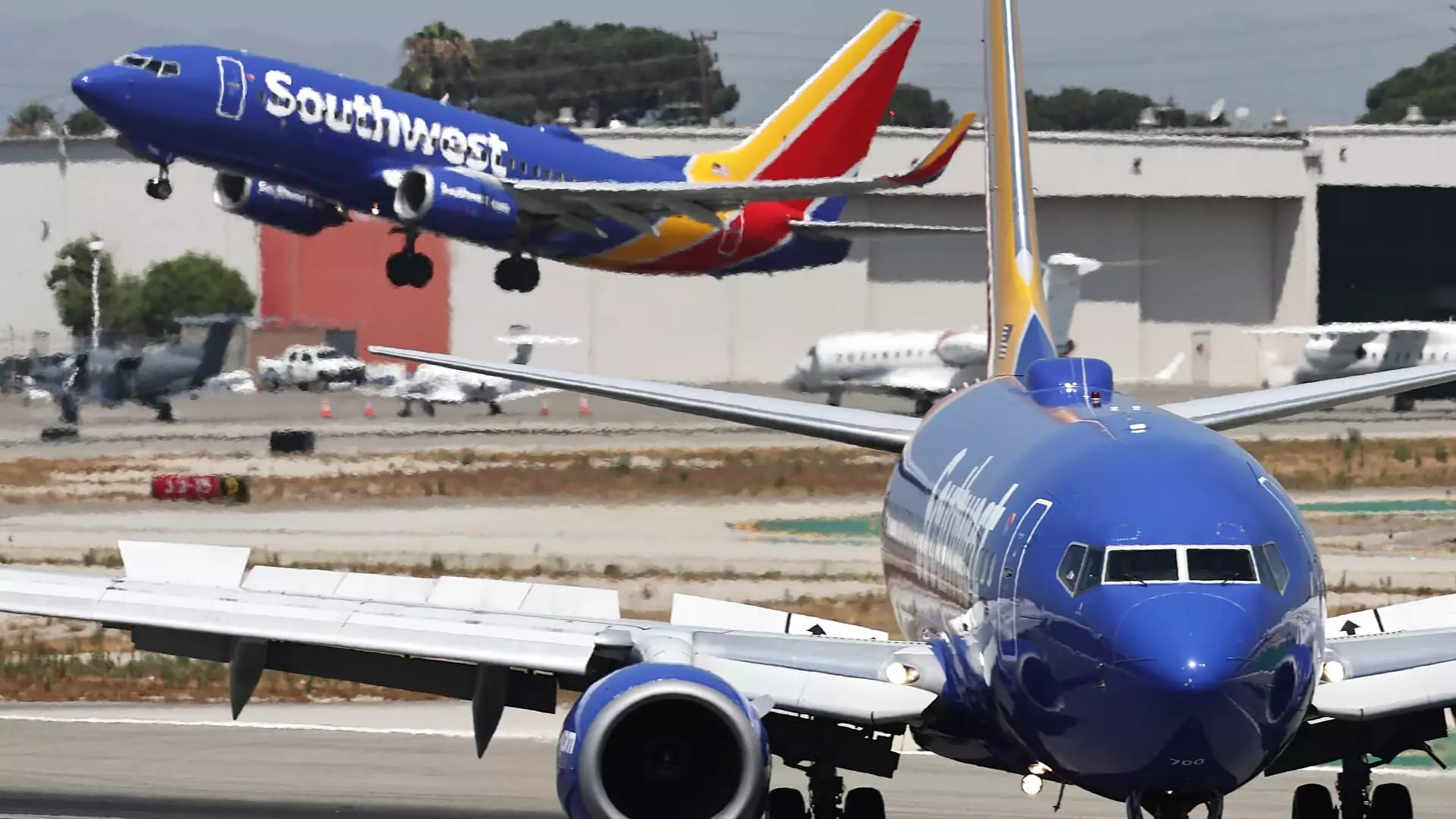Southwest Airlines is proactively navigating a challenging landscape, marked by both financial turbulence and the increasing scrutiny of activist investors. The airline recently revised its revenue outlook for the third quarter, signaling a bullish adjustment in response to various market factors. This revised forecast, projecting unit revenue growth of up to 3% compared to the previous year’s performance, underscores a determined effort to retain competitive momentum. This adjustment comes after a dip that magnified the vulnerability within the industry, spurred partly by operational disruptions like the CrowdStrike incident affecting competitors.
In a bold move aimed at bolstering investor confidence and securing its market position, Southwest’s board has authorized $2.5 billion in share buybacks. This strategy not only signals a commitment to returning value to shareholders but also serves as a defensive maneuver against activist investors, particularly Elliott Investment Management, which has been vocal about its desire for leadership changes within the airline. By bringing seasoned leadership on board, such as industry expert Bob Fornaro—who is set to join Southwest’s board—Southwest indicates a willingness to evolve its governance while also tapping into valuable experience. Fornaro’s history with Southwest’s predecessor, AirTran, adds a layer of internal continuity and familiar expertise that could prove beneficial during this tumultuous time.
As part of a broader strategic overhaul presented during an investor day event in Dallas, Southwest is keen to communicate its robust vision for the future. The evolving business model—highlighted by the introduction of assigned and extra-legroom seating—reflects an airline adapting to current consumer expectations and revenue opportunities. While critics might argue that the airline risks straying from its traditional low-cost model, Southwest maintains that its unique advantage lies in delivering free baggage check services. This longstanding policy draws customers away from competitors potentially weighed down by surcharges, suggesting that Southwest aims for volume over the revenue generated by fees.
In a move that underscores the serious operational recalibrations necessary to enhance efficiency, Southwest has announced plans to reduce its service footprint in Atlanta, impacting staffing levels significantly. By potentially cutting over 300 flight crew members from this major hub, the airline aims to compress its operational costs, a necessity in today’s highly competitive market. The decision reflects a dual strategy: maintaining service quality and enhancing profitability in key markets while reducing exposure in areas that may no longer offer sufficient returns.
Amidst these proposed changes and strategies, the executive leadership at Southwest faces mounting pressure. With the impending departure of long-standing former CEO Gary Kelly, the potential for transformative change at the helm has been a focal point for Elliott. Stakeholders are left to ponder whether Southwest’s strategies will not only appease activist investors but also position the airline for sustainable growth in an uncertain economic environment. Ultimately, the focus remains on balancing innovation, cost management, and consumer satisfaction to maintain its strength in a tumultuous industry landscape.

